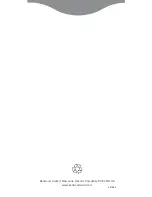
(II)
4
recalculated.
11) “
M+”
Symbol “ ” points at
“M+”
when scale is in accumulation mode.
12)
“UW”
Under entering a known unit weight mode, Symbol “ ” points at “
UW”
when
entered unit weight is lower than 4/5 of scale division. Unit weight is too small for ensuring
accurate quantity calculations.
13) “
SMPL”
Under the sample counting mode, Symbol “
” points at
“SMPL”
when
calculated unit weight is lower than 4/5 of scale division or the quantity of sample is less than
10 pieces.
14)
“UNIT WEIGHT”
Unit Weight Window --Displays the average unit weight value, or
number of weighments.
15)
“TOTAL COUNT”
Total count window –Displays the calculated number of pieces on the
weighing pan, or accumulated piece count value.
16)
“WEIGHT”
Weight Window--Displays weight of object on weighing pan, or accumulated
weight value.
4-2-2 Keyboard
1)
0 ~9
numeric keys Enters specific values for tare; unit weight and other data entries.
2)
●
key Decimal point
3)
SMPL
key Short press enters the sampling mode. Long press closes ACAI after
sampling. And shift Units when capacity setting.
4)
G N/SET
key Shift the displays of Gross weight and Net weight after tare. Long press to
enter parameters setting. And turn on or off check weighing when entering HI, LO, OK
setting.
5)
UWS/ITEM
key Find out the unit weight in memory or save the unit weight reset again.
Inputs the indicated unit weight via numeric keys and press it to start counting function.
6)
M+/SAVE
key Accumulate the records of counting or weighing. Save the changing
parameter. Set the capacity and resolution.
7)
M-/HI
key Clear the input figures. Set the value of HI. Enable the blinking figure plus
Summary of Contents for JCL-3K
Page 23: ...II 22 2 ERP System...






































